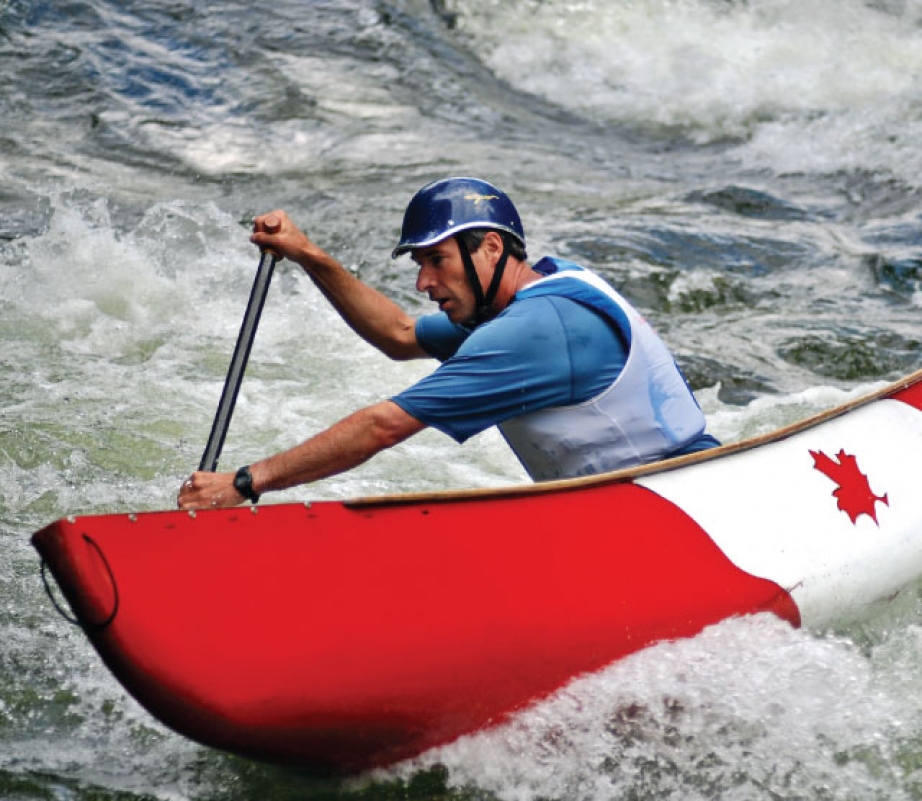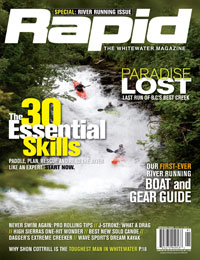Traditional canoe instruction says that the most effective steering strokes are done in the stern; typically stern draws, rudders and pries. But try watching experienced solo boaters and more often than not you will see them steering at the bow. In whitewater, momentum means the difference between catching must-make eddies and falling short. Bow control strokes maintain precious momentum, while steering from the stern essentially slams on the brakes. Choosing to steer from the bow or stern is determined by where you are going on the river and the momentum needed to make your move.
Power Steering
Steering from the bow, called power steering (Rapid Open Canoe Technique V10, I2), relies on adapting your forward and cross-forward strokes to control your boat angle. The advantage of power steering is that these strokes add to your momentum. The efficiency of using forward strokes means that you eliminate the drag caused by momentum-killing strokes like stern pries and rudders.
Picture yourself planning an S-turn across some fast moving water. In executing the move your canoe will begin facing upstream and travelling against, and then progressively across, the current. The swiftly flowing downstream water dragging on a stern draw or pry will kill your momentum and possibly blow the move. Power steering, with propulsion and control coming from forward strokes at the bow, is a much better method of maintaining momentum and controlling angle to pull off the move.
Stern Control
Stern strokes such as pries, rudders and draws are the traditional steering strokes used by all canoeists. They work incredibly well for steering. Anytime you need to turn your canoe in a hurry, the leverage created by these strokes is practically guaranteed to do the trick. The downside of these friction strokes is that they all slow you down—some more than others.
So, when is the best time to use stern control? Anytime you have enough momentum to counter the drag of the stroke—like when you are charging downstream and want to eddy out. You are carrying loads of downstream momentum and facing a rapidly approaching 180-degree turn. A sure way to make that eddy turn happen is a stern control stroke. Friction here is not an issue—you are going downhill, building momentum as you approach the turn—heck, you may even want to slow down.
Making the Move
Making your move every time will depend on matching your paddling technique to how you plan on using the current. Your strategy has to account for the momentum gained or lost from both strokes and the river current. Think of bow control as having less friction and higher efficiency, while stern control gives you leverage and security. In the end, choosing to steer from the bow or stern comes down to one simple rule: Use the type of control strokes that provide you with the momentum you need to make your move.
Andrew Westwood is an open canoe instructor at the Madawaska Kanu Centre, member of Team Esquif and author of The Essential Guide to Canoeing. www.westwoodoutdoors.ca.
This article first appeared in the Spring 2009 issue of Rapid Magazine.




